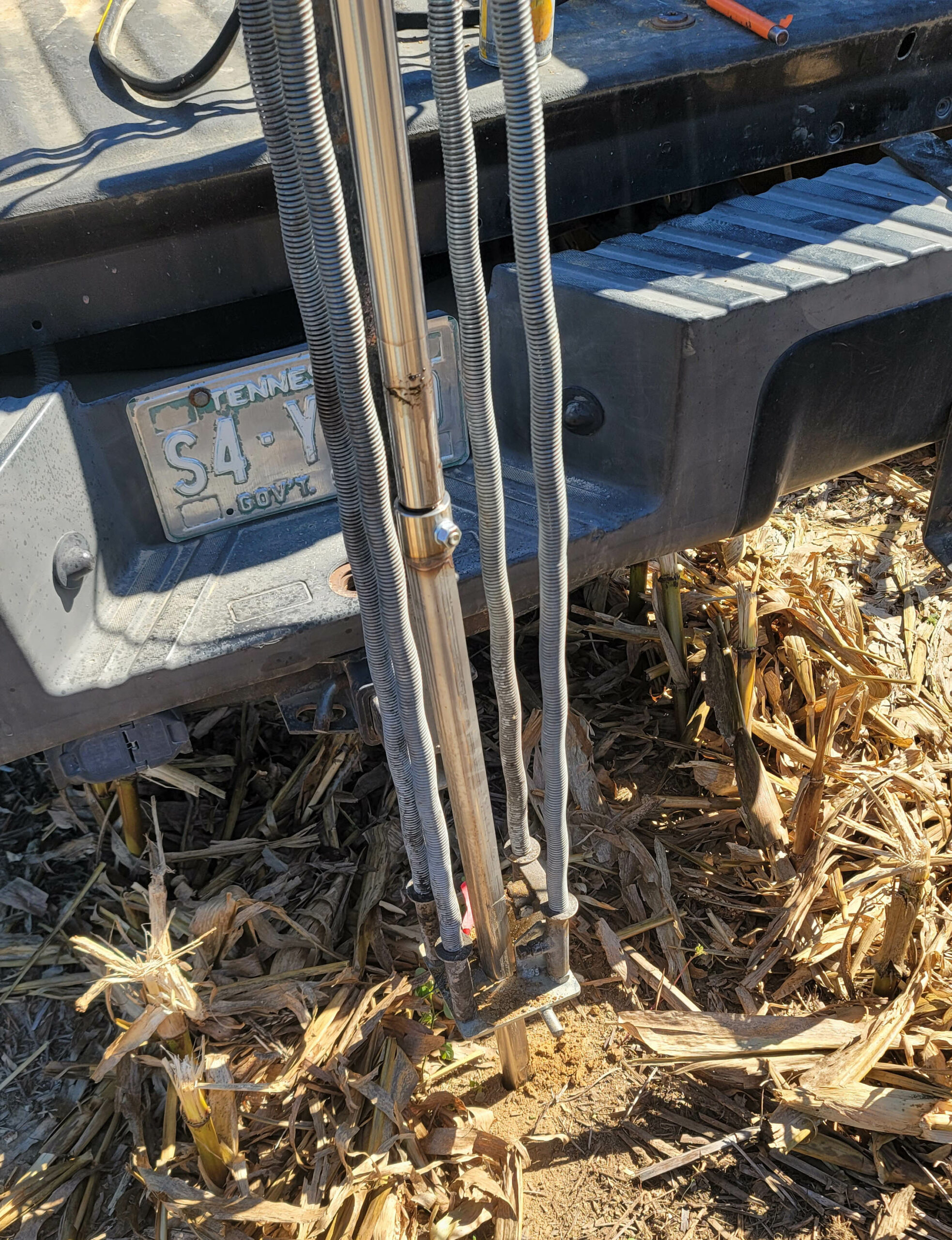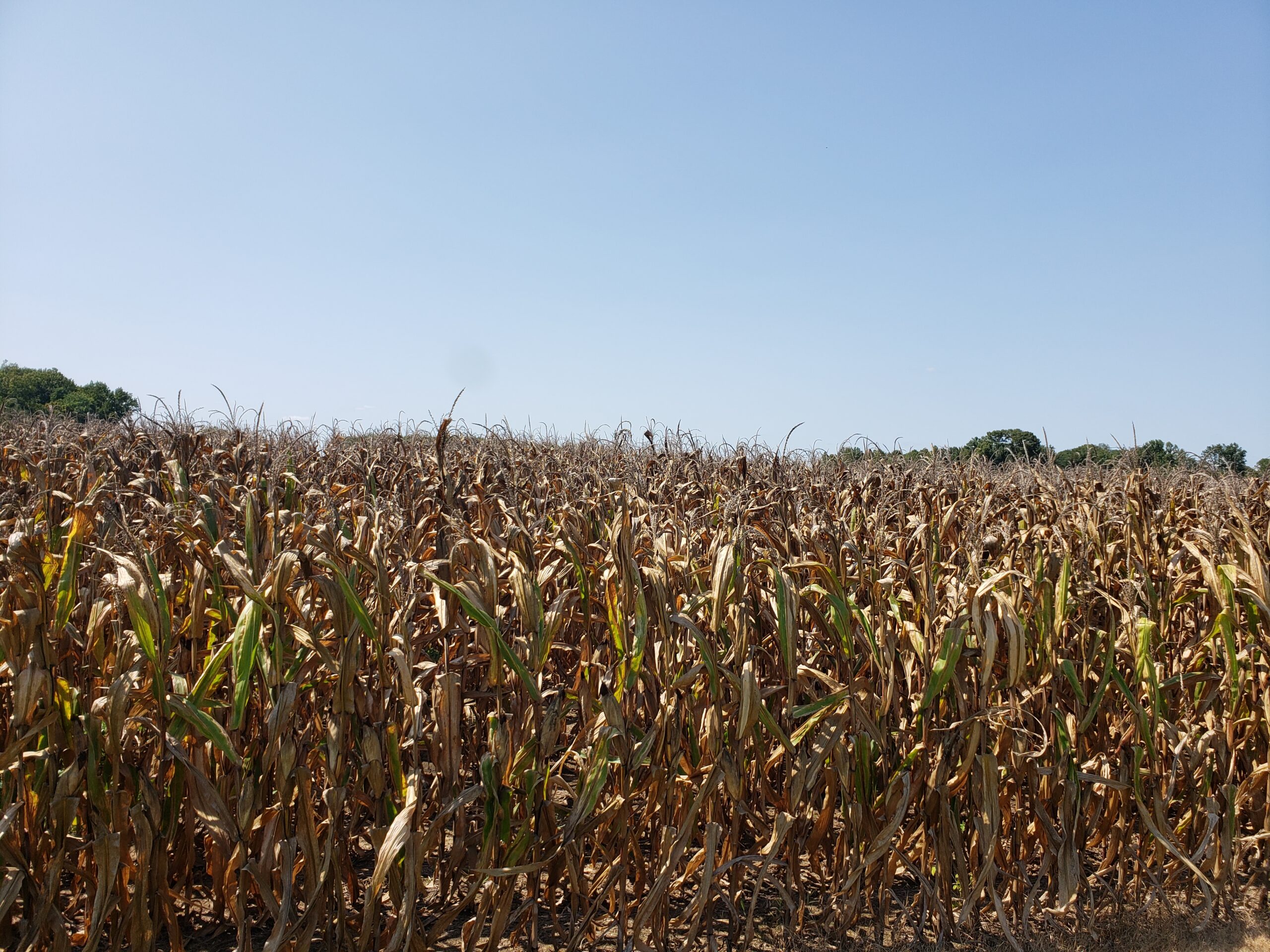The unusually dry soil conditions during most part of the growing season this year limited nitrogen (N) uptake and lessened the potential for N loss through denitrification or leaching. Intuitively, the unused N, which would be in the nitrate form may remain in the soil. However, since August, there has been considerable amounts (more than 12 inches) of rainfall which can affect the availability of nitrate-N. This has raised questions about how much nitrate-N would be available in the soil after drought and late season rainfall? Continue reading
All posts by Nutifafa Adotey, Soil and Nutrient Management Extension Specialist
Impact of Drought on Residual Soil Nitrate
Abnormally dry soil conditions as a result of rainfall amounts far below average during this corn growing season present unique nutrient management decisions after harvest, particularly for growers considering wheat crop this fall. This article will address two key questions that may come handy in making management decisions: Is there be considerable amounts of residual soil N left after the 2022 corn crop? and if the residual soil nitrate is sufficient to meet N demand of the wheat crop in the fall? Continue reading
Nutrient Management in Cotton During Drought Conditions
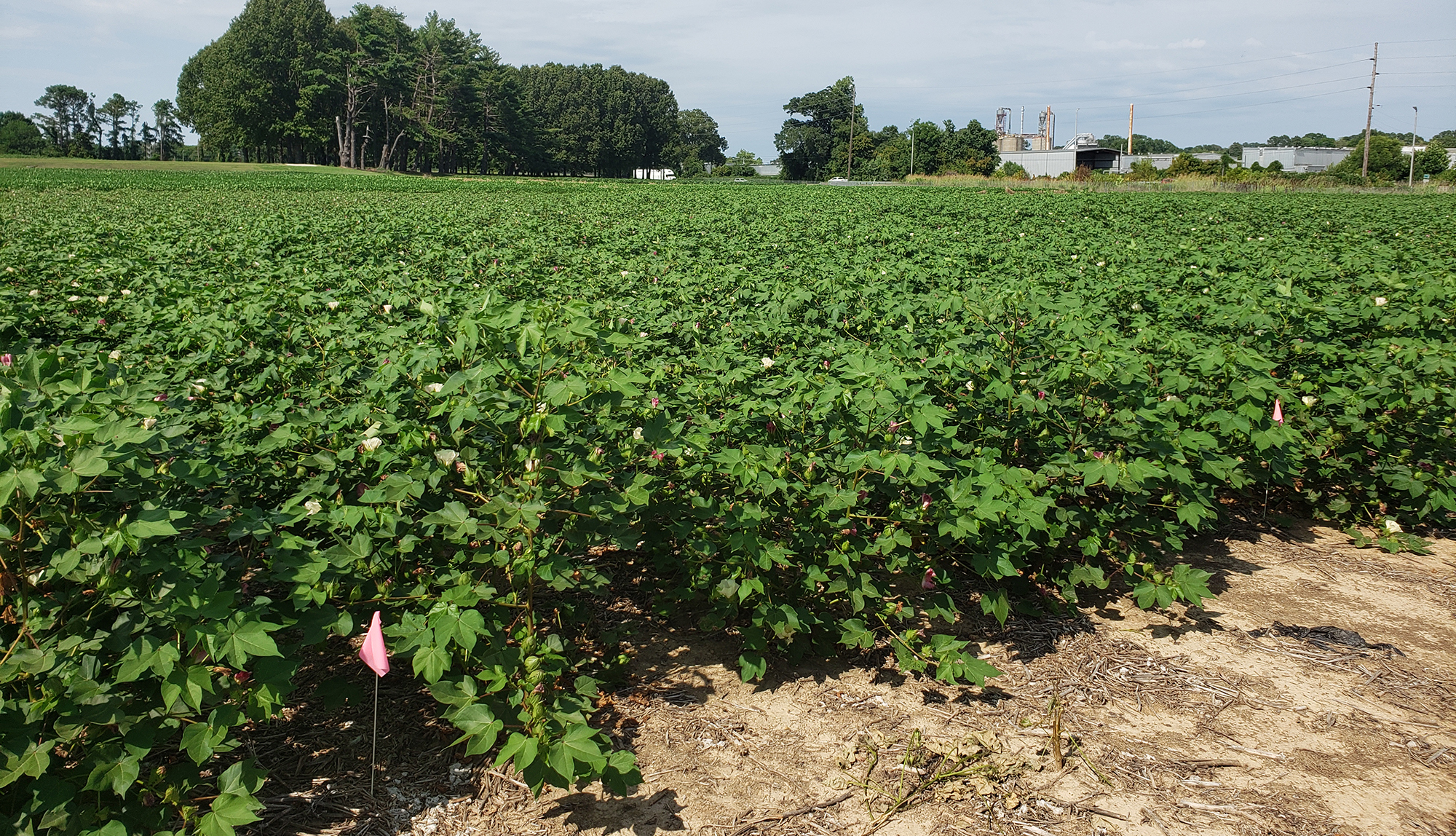 Due to the ongoing drought, I’ve recently received questions along the lines of, “how much N is still available after the prill sits on the soil surface without rain for 35 plus days?” and, “should I begin a foliar fertilizer regiment to meet plant N/K/S/B demands?” In this blog, I tackle both of these questions and share N response curves generated from Tennessee data over the past 5 years.
Due to the ongoing drought, I’ve recently received questions along the lines of, “how much N is still available after the prill sits on the soil surface without rain for 35 plus days?” and, “should I begin a foliar fertilizer regiment to meet plant N/K/S/B demands?” In this blog, I tackle both of these questions and share N response curves generated from Tennessee data over the past 5 years.
“I applied urea and it didn’t rain for a month. Will my cotton crop have the N required to make close to maximum yields?”
For growers that have applied 60-90 lb as urea, the simple answer is yes; the amount of soil nitrate released from the urea you applied will likely meet cotton N demand without additional N fertilizers given plant available water increases significantly in the coming week. Generally, if surface applied urea fertilizer is not incorporated into the soil, some of the N may be lost as ammonia into the atmosphere depending on weather, soil properties and management practices. Continue reading
In-season Plant Testing Interpretation During Dry Soil Conditions
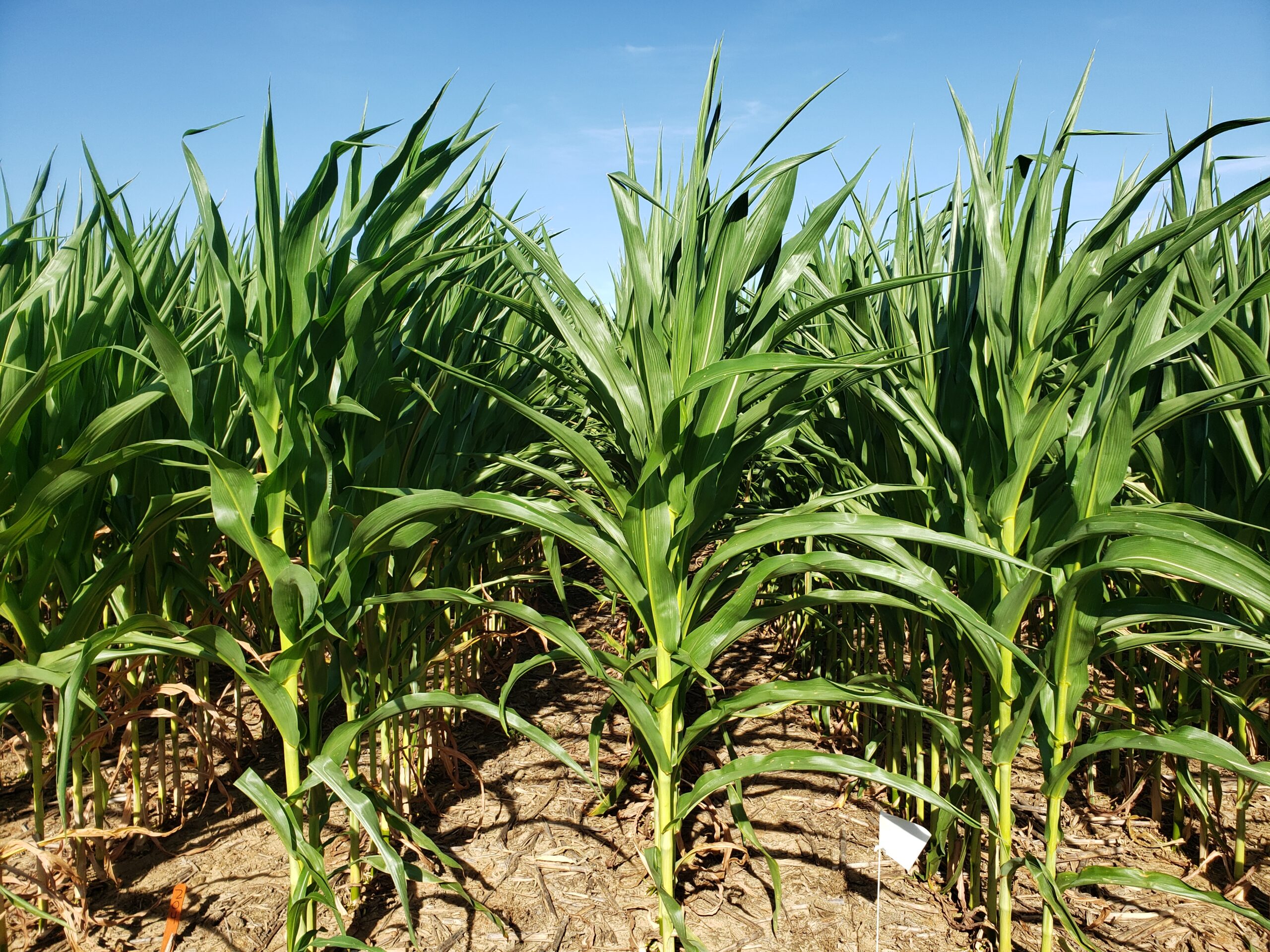 In season plant tissue testing helps producers monitor plant nutrition and can be useful in diagnosing nutrient deficiency. Detecting deficiencies early can allow the corrective or preventive action that will minimize yield effects from deficiency during the growing season. Nutrient concentrations vary greatly with plant growth stages and the part of the plant that is sampled so specific sampling guidelines and interpretation have been instituted to prevent false diagnosis. Continue reading
In season plant tissue testing helps producers monitor plant nutrition and can be useful in diagnosing nutrient deficiency. Detecting deficiencies early can allow the corrective or preventive action that will minimize yield effects from deficiency during the growing season. Nutrient concentrations vary greatly with plant growth stages and the part of the plant that is sampled so specific sampling guidelines and interpretation have been instituted to prevent false diagnosis. Continue reading
2022 Certified Crop Adviser of the Year
The Tennessee Farm Bureau along with the Tennessee Certified Crop Adviser Board of Directors sponsor an Award to a deserving Tennessee Certified Crop Adviser who has exemplified the merits of service and dedication to their customers.
The winner will receive a plaque and a $500 cash prize.
To nominate someone, please write a short bio of this person’s accomplishments and submit to Jaymie Seay, Executive Board Administrator for the Tennessee CCA Board of Directors. Her email is Jaymie.seay@protritionfeed.com You do not have to be a CCA to nominate someone. Please submit by August 30, 2022.
A committee from the Tennessee CCA Board will select the winner.
Management Practices to Optimize Nitrogen Fertilizer Use with High Fertilizer Prices
Nitrogen (N) fertilizers may be a limiting factor for corn production based on rising N fertilizer prices and other production input. There are a few things to consider with high N fertilizer prices: (a) apply N fertilizer at the right time, (2) add or treat urea-based fertilizers with a proven N stabilizer, and (3) apply the N fertilizer at the appropriate N rate.
Apply N fertilizer at the right time
Preplant N application in corn is not recommended in Tennessee because of the length of time from application to when the corn plant will begin significant N uptake. One exception is the application of anhydrous ammonia with properly calibrated equipment. Corn plants take up little N (<12% of N uptake during the growing season) until V6 growth stage, with the most active period of N uptake occurring between V8 to V14. Hence, there is a greater risk for N loss via ammonia volatilization or nitrate leaching from preplant N. Split application is recommended when N rates are greater than 120 lb N/A. A typical split management practice is to apply a third of the total intended N per acre at planting and sidedress the remaining N fertilizer between V4 to V6. Split application also provides flexibility to adjusting N rate during growing season as compared to just a single application at planting. Split-application of a third of the recommended N at planting and sidedress the remaining N fertilizer provides greater yield than single application at planting (Figure Below-average across six trials). Continue reading
Integrating Cover Crops in Nitrogen Management
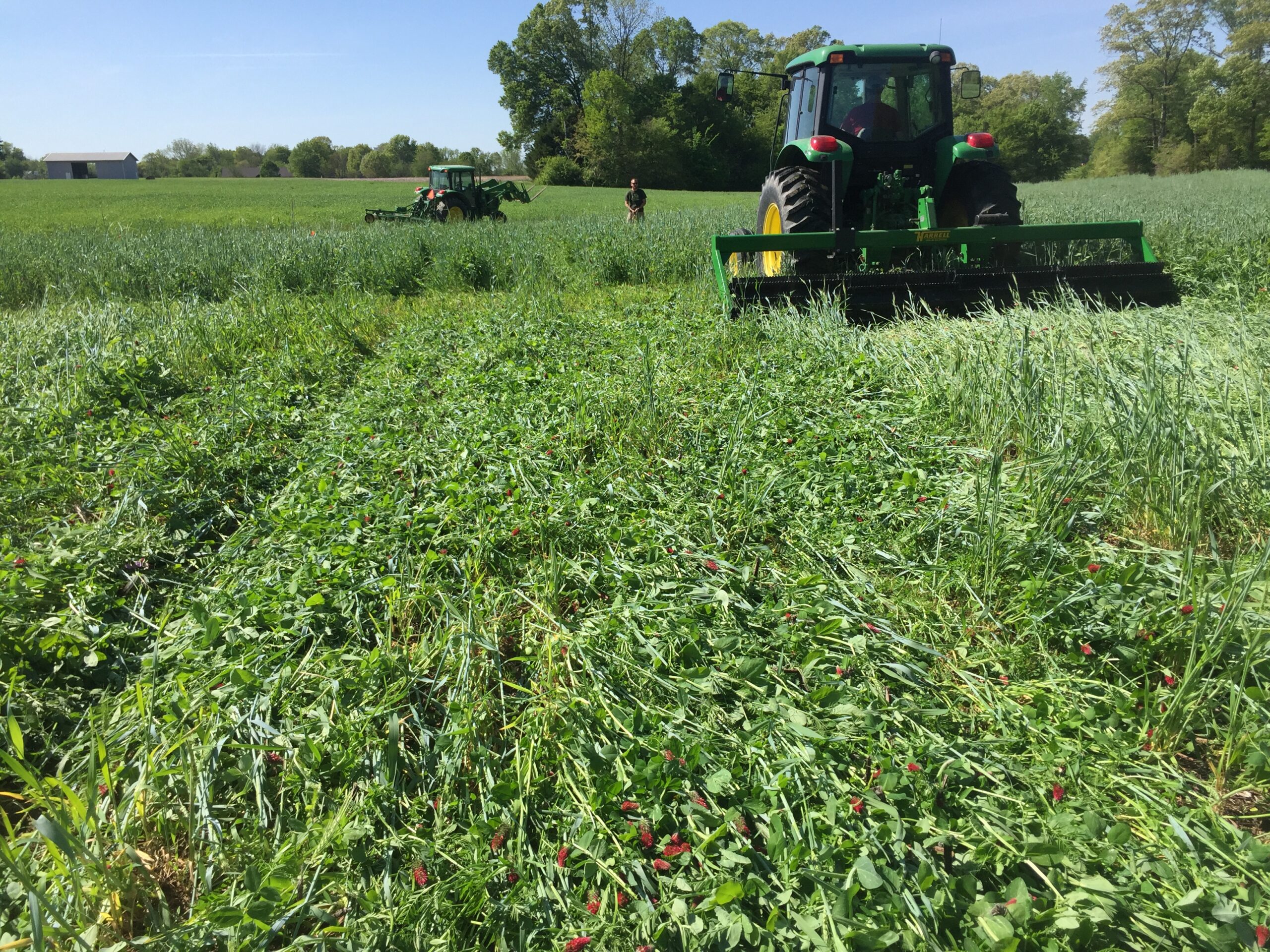 Cover crops can supply nitrogen (N) to the soil for the subsequent cash crops and this nitrogen credit may be successfully integrated into N management. The challenging question is how much of the N supplied by cover crops is available for the next cash crop. Unfortunately, there is not a simple answer to this question since several factors influence the N availability from cover crops. There are two primary considerations if the goal of planting cover crops is to contribute N to the soil: the proportion of species in cover stand and the timing of cover crop termination.
Cover crops can supply nitrogen (N) to the soil for the subsequent cash crops and this nitrogen credit may be successfully integrated into N management. The challenging question is how much of the N supplied by cover crops is available for the next cash crop. Unfortunately, there is not a simple answer to this question since several factors influence the N availability from cover crops. There are two primary considerations if the goal of planting cover crops is to contribute N to the soil: the proportion of species in cover stand and the timing of cover crop termination.
The proportion of species in the established cover stand is important because different species have different effects on N. Depending on the species of cover crop planted, soil N may be removed or supplied to the soil. Grass cover crops (e.g. cereal rye, annual rye, wheat, oats), which are referred to as “scavengers” take up nitrates from either residual N fertilizers or organic matter decomposition. So, grasses do not contribute a whole lot to the soil N since not all of the scavenged N is available for the next growing season. An established cover stand comprised of all or mostly grasses will not provide any significant N benefit. Hence, the recommended N rate for the cash crop should not be reduced. In contrast, legumes (e.g. clover, winter pea, hairy vetch) supply additional soil N through biological N fixation. A well-established legume cover crop stand would supply sufficient N to warrant reducing the recommended N rate. UT currently recommends a 60 to 80 lb N credit for a well established legume cover crop that has reached early bloom.
Generally, most growers plant multispecies of cover crops with less than 50% of biomass being a legume. Since legumes supply N, a good percentage of legume in cover stands is required to maximize plant available N for the next cash crop. A study in TN has shown that 30% legume biomass in cover stands can supply up to 43 pounds of N per acre when terminated late. It is critical to evaluate a stand of mixed species cover crops to determine actual legume proportion if some N credit is desired.
The second consideration is the timing of cover crop termination. There is a thin line between growing cover for extended periods to maximize plant available nitrogen (PAN) and yield loss of the cash crop. Generally, if the goal is to maximize PAN from a well-established legume stand, late termination may be a preferred choice. It is worth pointing out that late termination would result in delayed planting and increase the potential for yield loss of cash crops such as corn. If the legume is terminated early, those plants are smaller and have less time to fix N which can be released back into the soil. In contrast, well-established grass stands must be terminated early, especially if growing a cash crop with high N demand (e.g. corn). This strategy will not necessarily supply N but, rather prevent N from being tied up in the soil.
In summary, unique challenges presented by rising N fertilizer costs may present opportunities to rely on cover crops to meet some N need for the next cash crop. However, to integrate cover crops in N management, the cover crop should consist of at least 30% of established legume in the cover crop stand and should be terminated at early bloom. Currently, UT only recommends a N credit of 60-80 pounds per acre of plant available N following a single species well-established legume cover crop that has reached early bloom.
Nominations for Certified Crop Adviser of the Year
The nomination for the CCA of the Year is still open. This is a great opportunity to honor a CCA personnel in TN for their exceptional customer service, innovations, substantial contribution to the exchange of ideals and the transfer of agronomic knowledge within the agricultural industry. Click on the CCA of the year brochure to learn more about the award or nominate a deserving Certified Crop Adviser. Contact Jaymie Seay (JSeay@ourcoop.com) for additional information.




